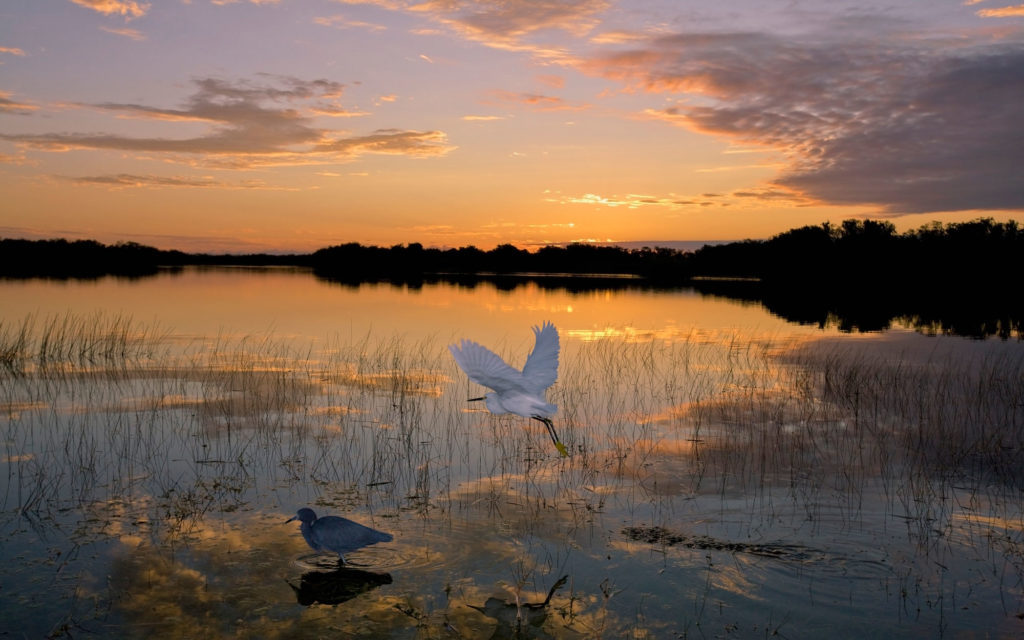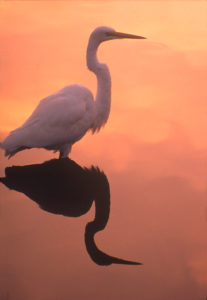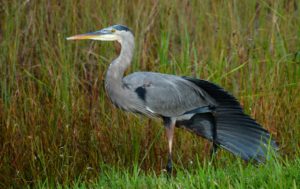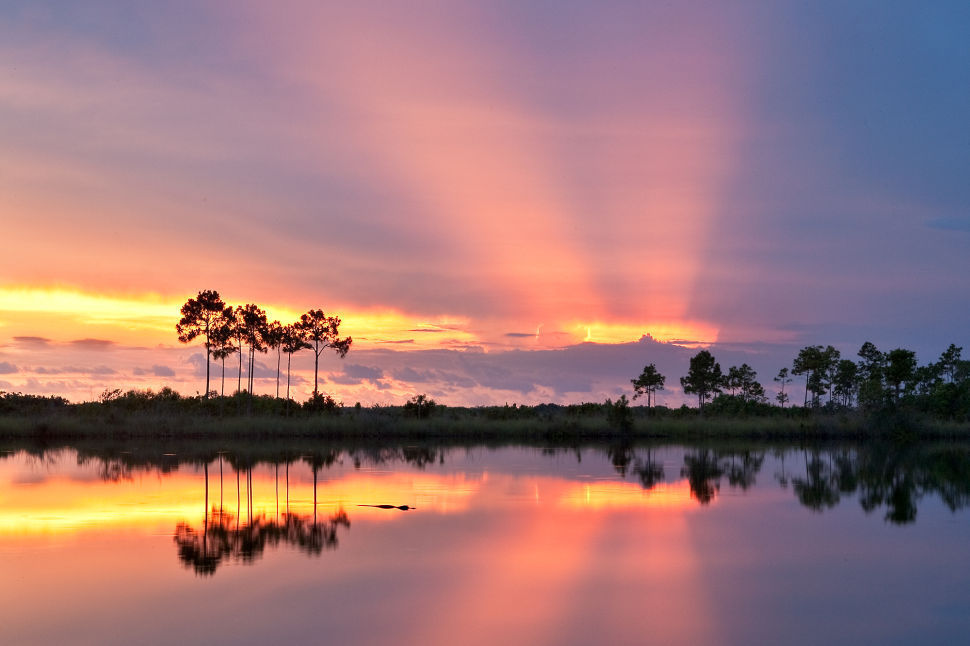Our destination this week is Everglades National Park – 1.5 million acres at the southern tip of mainland Florida. Most of the park is a federally designated wilderness, but parts of this subtropical landscape are easy to visit.
This is a place that belongs on every road-tripper’s bucket list. If you’re like most visitors, you’ll enter the park from the town of Homestead and drive the Main Park Road 38 miles to Flamingo. You realize right away this place is different than other national parks you may have visited. This is not the Grand Canyon, Yosemite or Mount Rainier, where the scenery yells at you and demands your attention. Everglades is subtle. It whispers to you.
The land is flat. What you see for most of the way is a sawgrass prairie with lots of freshwater sloughs and an occasional shrub or small tree. One Florida writer called it “a river of grass.”
This week’s featured photo is from the South Dade News Leader.
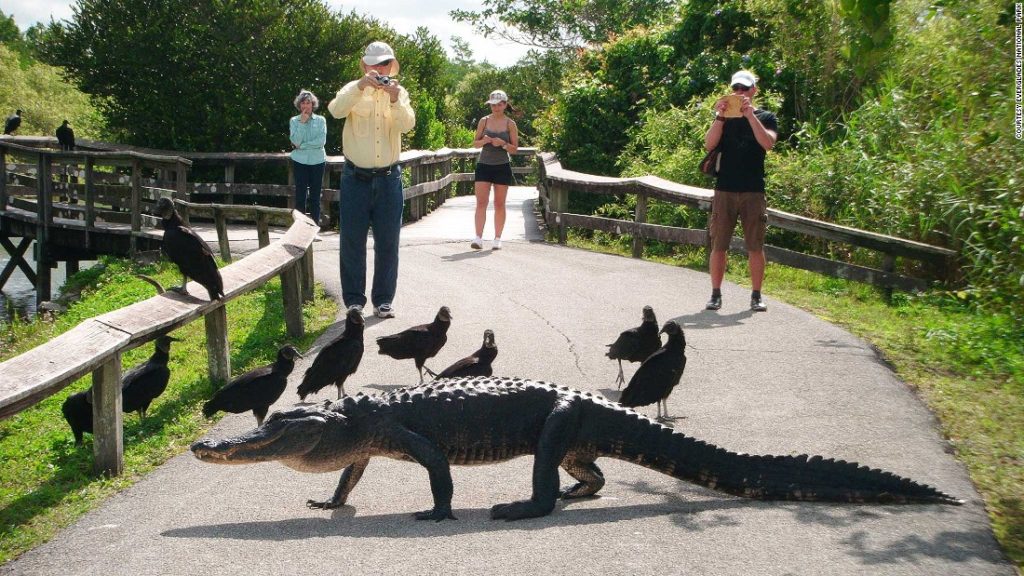
Gentle rhythms
Don’t let this sameness lull you into boredom. To appreciate this place, you have to tune yourself into its gentle rhythms. Once you do, you can see the diversity in its landscape. These subtle changes – a patch of pine forest here, an island with subtropical hardwoods there, plus scattered stands of cypress – reflect tiny changes in elevation. Another important environment is the mangrove forest, which occurs where freshwater and saltwater mix. It accounts for about a third of the park’s area. Each of these ecosystems has its own community of plants and animals.
This variety of ecosystems is the heart of what makes the Everglades a special place. Its biodiversity is unsurpassed. For example, the park is home to over 300 species of bird life. Reptile life includes alligators, of course, but also the threatened American crocodile. The endangered Florida panther lives here, too, although it’s seldom seen. This biodiversity has led to the Everglades becoming a UNESCO World Heritage Site and an International Biosphere Reserve. You will see wildlife here. That’s why Everglades National Park belongs on your bucket list.
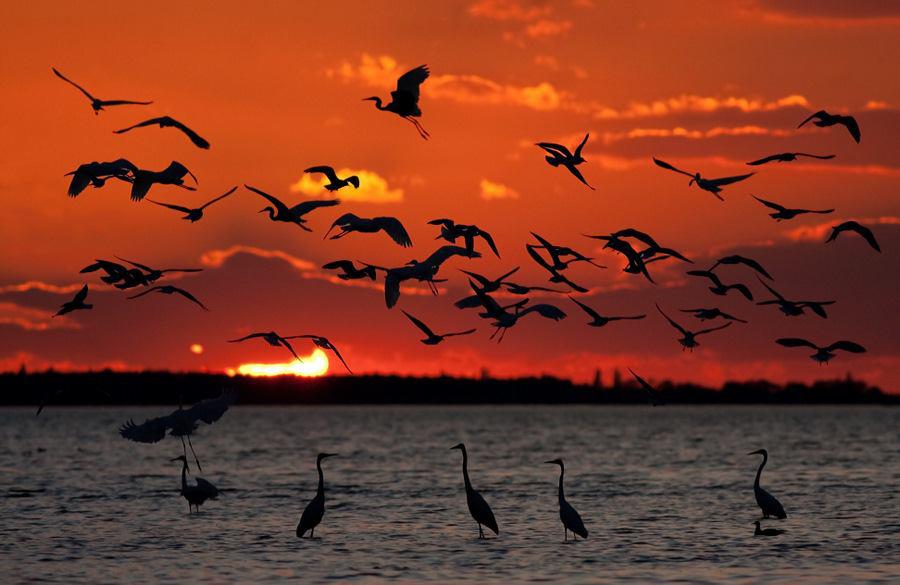
It’s skeeter city during the wet season!
A great introduction to the Everglades is an 11-minute video on the Main Park Road, featuring a park ranger. Go to www.nps.gov/media/video/view.htm?id=F808E7C1-1DD8-B71C-07BFE2A0B7F53E01
There are two seasons here — the wet and the dry. You want to come during the dry season, which runs from December through March. The rest of the year is the wet season, which brings unbearable heat and humidity, plus clouds of ravenous mosquitoes. Do people come here in July and August? Sure, just like people go to Death Valley in summer. Between you and me, those folks are flat-out nuts. Don’t be one of them.
Last year just under one million people visited Everglades National Park. The most popular months, by far, were January through March. That’s when the park is at its best, but it can get fairly crowded. To make sure you hit the highlights and see the most wildlife, make reservations for the Shark Valley Tram Tour, all boat tours, canoe rentals and campsites. The park’s website (see below) will help.
A good place to begin planning your Everglades road trip is the park’s very good website — www.nps.gov/ever. There, you’ll find the latest information on travel conditions, operating hours, camping, ranger programs and more. At the time of this writing (early October), there were several temporary closures caused by Hurricane Irma. Just to be safe, check the website before planning an Everglades trip.
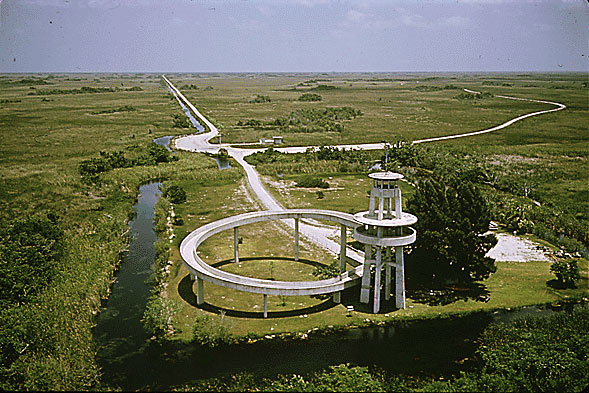
Logistics
Everglades National Park has three widely dispersed entrances. The most popular – and the one offering a self-driving tour – is near Homestead off US 1. For the quickest way to get up close and personal with the Everglades, head for the Shark Valley entrance, located 35 miles west of Miami off US 41. There, you can take a tram or bicycle tour to an observation tower. The third entrance is in the southwest corner of the park at Everglades City. That’s where you can take a boat tour of the Ten Thousand Islands region.
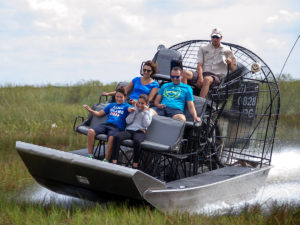
Along US 41 are several businesses offering airboat rides. Three are official concessionaires that take you into the park. You’ll find them listed on the website.
There are no overnight accommodations in the park. Most visitors stay in Homestead or somewhere on the south side of Miami. The park has two campgrounds; check the website for details.
The park has five visitor centers: Three are accessed via the Homestead entrance. In addition, there’s one each at Shark Valley and Everglades City. Hours vary slightly; check the park’s website for the current hours of the center you want to visit.
The park’s entrance fee is $25 for cars and $20 for motorcycles. Ranger-led activities are included, but boat tours and tram tours are not.
Tom’s travel tips
Prepare for mosquitoes. Whatever the season, whatever the rangers tell you, expect to be attacked. Bring insect repellent, and wear a long-sleeve shirt and long pants. My last visit was in December 2015. The ranger said mosquitoes wouldn’t be a problem. Hah! I got eaten alive.
Fly to Miami. Flying in for your Everglades visit? Use Miami or Fort Lauderdale Airport. Rent a car. There’s no public transportation to the Everglades, and the Park Service tells us that people who arrive at Shark Valley via Uber have a tough time getting a ride back to the city.
Quickie visit. This is a good itinerary if you have just a couple of hours to spend. Book a room in Homestead or South Miami. Start by heading west on US 41 to the Shark Valley entrance. Take the tram tour. You’ll have an excellent chance of seeing wildlife. During the high season, make a tour reservation; the park’s website has a link. On your way there or back, take an airboat ride.
Main Park Road. I recommend a full-day visit combining at Shark Valley with the Main Park Road. From Shark Valley, drive east on US 41 then south on SR 9336 to the Homestead entrance. Stop at the Coe Visitor Center. Check on any ranger-led programs being offered. Take the short side road to the Royal Palm Visitor Center. Walk the ½-mile Anhinga Trail – another good wildlife opportunity. Skip the Pa-hay-okee overlook if you’ve already visited the Shark Valley Observation Tower. Stop at Mahogany Hammock to see the dense subtropical vegetation.
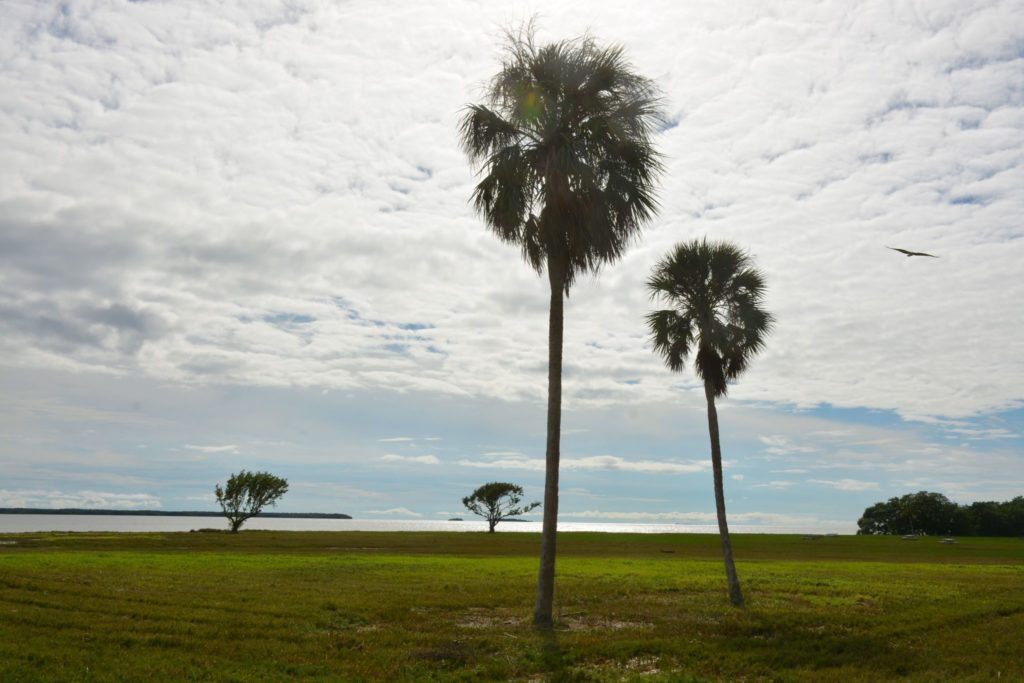
Crocs rock!
Take a boat tour. At Flamingo, take one of the boat tours leaving from the marina. I took one a few years ago and got to see an American crocodile. Awesome! Flamingo is also a great place for bird life; check the pond known as West Lake. Afterward, return to Homestead.
I hope you’ve enjoyed our visit to Everglades National Park. Please join me again on Monday, October 16, as we head to south Texas and visit Goliad mission and presidio.
Below are some assorted Everglades wildlife photos I hope you’ll enjoy.
